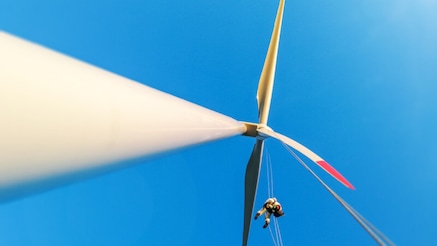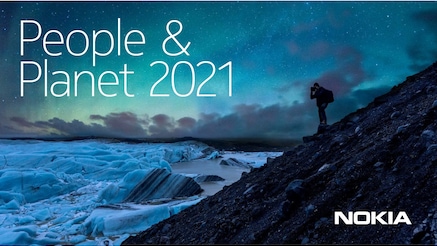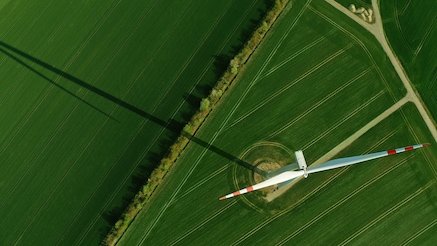ESG myths debunked
Take the quiz
It’s time to bust some ESG Myths
See if you can separate fact from fiction
From verification checks on fake news to social media bots driving disinformation, the need to find the truth behind a topic has never been more crucial. Environmental, social and governance (ESG) topics are frequently in the news headlines, but like every big topic, certain myths arise that don’t stand up to more scrutiny. Take the quiz to debunk some ESG myths.
#1 If a business purchases renewable electricity, it means the business creates zero carbon emissions
Purchased electricity is part of Scope 2 emissions. Generally, it doesn’t account for the majority of a company’s emissions. Scope 3 usually accounts for the greater part of a company’s carbon emissions.
#2 CSPs can play a major role in helping other industries decarbonize
Mobile and digital technologies, such as 5G, cloud, automation and AI can play a crucial role, enabling businesses to boost productivity while reducing emissions.

White paper
Industry pathways to net zero
#3 From a sustainability perspective, footprint and handprint are interchangeable terms
A person’s or company’s environmental or social handprint represents the positive impact they have on the world, their footprint represents their negative environmental and social impact they have on the world. The digitalization and enhanced connectivity solutions we provide can help asset intensive industries to become more efficient, help to minimize waste and enable greater reuse of precious resources and materials.
#4 Smart industries can lead to a more sustainable future
Connectivity, IoT sensors, probes, drones and AI can be applied to a range of industries to make them smarter and more sustainable. Some of the greatest benefits can be seen in agriculture, where enhanced connectivity and digital services (smart technology) can help to: increase yield per hectare; reduce the amount of insecticides, fertilizers and water used and ensure that less energy and food is wasted. Smart tech can also monitor food production and transportation and ensure careful use of our limited resources.
#5 Air cooling is the most efficient way to cool base stations and data centers
Liquids can transfer 4000 times more heat compared to air. This can bring a 90% reduction in cooling system energy consumption. Nokia has commercialized the world’s first liquid cooled AirScale Base Station. The solution captures the waste heat to liquid, which makes it possible to transfer the heat over distances and to circulate the heat for other purposes like building heating. This can reduce baseband CO2 emissions further by 80%.
#6 AI can help CSPs reduce network energy consumption and emissions
The majority of CSPs (78%) see AI as very or extremely effective at delivering energy-efficiency improvements. In customer interviews conducted as part of the Nokia–GSMAi survey, CSPs said they believe AI holds the promise of realizing easy and quick wins on telco energy efficiency.
#7 The digital divide is only an issue for developing markets
The pandemic showed that the digital divide is present in developed markets and urban areas too. Income, literacy, gender, ethnicity, age and physical abilities will impact whether people can afford broadband access and connected devices or have the skills to access and use digital services safely.
#8 Gender equality is a sustainability issue
According to the UN, women in developed and developing markets are more likely to occupy low income, part time or unpaid caregiver roles and less likely to progress to higher education and be financially independent. They are also more likely to lack the necessary identity documentation to access social benefits (housing, child or unemployment benefits) and secure higher paid jobs. Digital connectivity, skills and devices can provide equality of opportunity and a digital ID can ensure their independence and full socio-economic contribution.
#9 Circular processes and practices are not applicable to telecommunications
Around 50% of global emissions come from the global production of materials and less than 10% of materials are treated as circular. Increasing circular practices and reducing waste are therefore critical to combating climate change. Nokia looks at circularity from two perspectives: first, how we can increase the reuse of materials in creation of new products; and second, how we can ensure maximum circularity of our operational value chain.
#10 5G can play a role in achieving the UN Sustainable Development Goals (UN SDGs)
5G can help to achieve the UN SDG 9 (Industry, Innovation and Infrastructure). During the Covid-19 lockdowns, there was a significant increase in demand to keep people connected for work, school and to access public information. 5G provides the high speeds, capacity and latency to support the increase in demand. UN SDG 8 (Decent work and economic growth) and UN SDG 13 (Climate action) are also areas where we can have the greatest positive impact. We also believe the technology we provide can positively contribute to accelerating and achieving all 17 SDGs.






